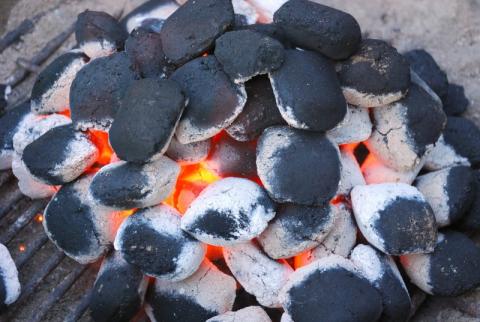Calling all campers to be aware of CO poisoning risk linked to BBQs

With the Jubilee Bank Holiday Weekend providing the perfect opportunity for camping, the Public Health Agency, PHA, is reminding people of the danger of carbon monoxide (CO) poisoning from leaving lit or smouldering barbeques inside tents or caravans.
Many people are already aware that fossil fuels and wood, when burnt without enough oxygen, create high levels of CO. However, the PHA is concerned that campers may not be aware of the risks involved with taking lit or smouldering barbecues inside tents, awnings or caravans.
CO is a colourless, tasteless, odourless gas that is non-irritating, and as a result can be very hard to detect. Symptoms include headaches, nausea and vomiting, exhaustion, drowsiness, dizziness and lightheadedness, ‘flu like’ symptom, palpitations (feeling your heart beat oddly), chest pain and losing consciousness.
CO poisoning can be fatal and affect anyone, including healthy adults. However, children, students, the elderly, pregnant women and anyone with heart or breathing problems are more vulnerable to its effects.
Dr Anne Wilson, Consultant in Health Protection, PHA, advises: “It is important to remind people going camping or caravanning over the Jubilee Bank Holiday weekend that despite being out in the fresh air, carbon monoxide can build up very quickly in enclosed spaces, such as tents and awnings, to levels that can kill.
“Barbecues should never be used or left inside tents or awnings once they have been lit or after they have been used – they should be disposed of safely ensuring all fire and ashes are completely extinguished.
“It is essential that people take care when using barbecues and ensure that they are safe and used in properly ventilated spaces. Anyone who suspects they are suffering from carbon monoxide poisoning while camping should immediately go outside into the fresh air and seek urgent medical attention.”
Carbon monoxide poisoning causes around 50 deaths each year in the UK as well as a number of hospital admissions. It is known as the ‘silent killer’ – you can’t see it, taste it or smell it. Carbon monoxide is released from the burning of carbon-based fossil fuels including coal, gas, oil, petrol, paraffin, charcoal and wood.
To minimise the risk of carbon monoxide poisoning in the home the PHA recommends the following:
- install an audible Carbon Monoxide alarm that meets British or European standards (BS Kitemark or EN 50291). These cost as little as £20.00 and can be purchased from large DIY stores and food retail stores. Alarms however, should not be used as a substitute for regular servicing of appliances;
- sweep chimneys and flues every year if you use solid fuel;
- if you are in rented accommodation ask your landlord to provide you with an up-to-date gas safety record. This is a requirement by law and is particularly important for students renting houses and flats;
- keep flues, air vents and grilles clear and ensure rooms are well ventilated.
Dr Wilson added: “Carbon monoxide poisoning can be fatal and can also cause long-term health problems if victims are exposed to low doses over a long period of time. The signs and symptoms of carbon monoxide poisoning are often mistaken for other illnesses, such as food poisoning or flu – the symptoms can be similar to flu but without a raised temperature. Please look out for these signs and symptoms and consider if carbon monoxide poisoning could be the cause.”
Contact the PHA Press Office on 028 9055 3663.
The guide, Carbon monoxide: are you at risk? is available to download from nidirect http://www.nidirect.gov.uk/carbonmonoxide
